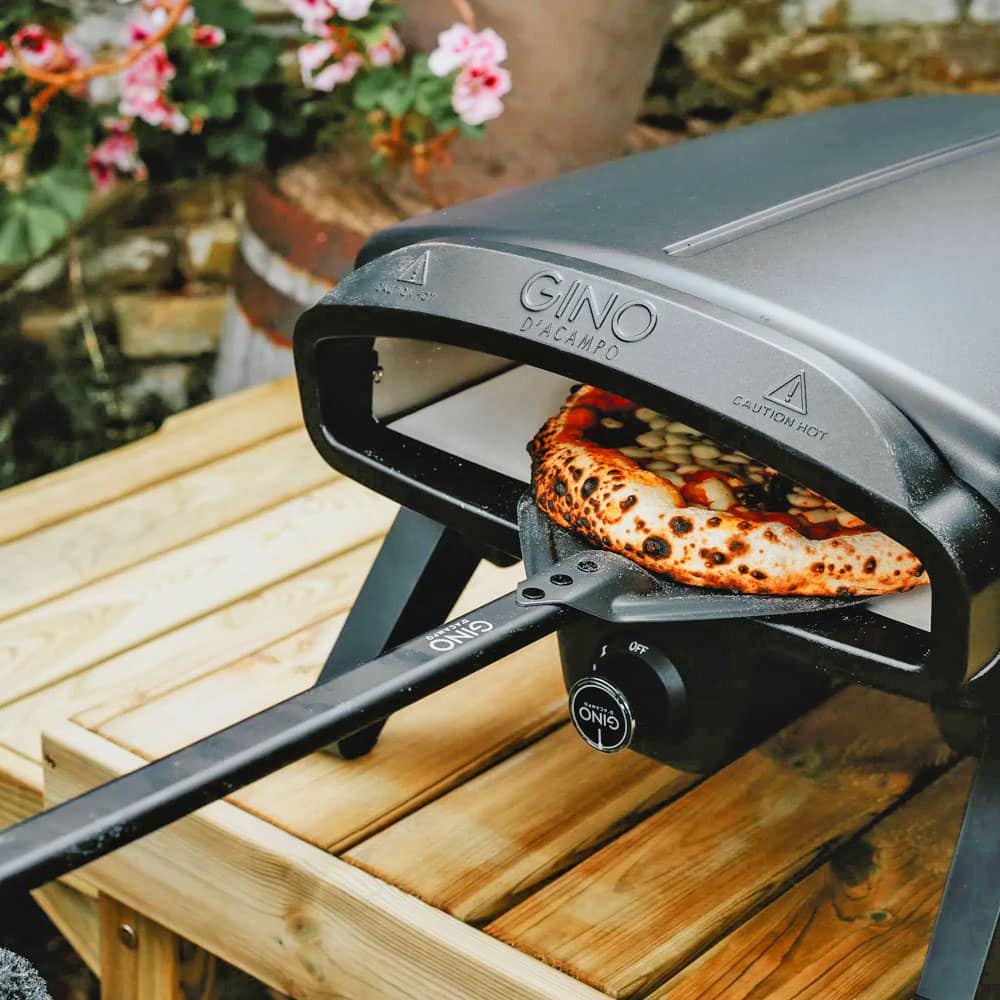All Blogs, Food, Pizza Ovens
The Secret to Achieving Perfect Leopard Spotting Every Time
When it comes to Neapolitan pizza, there a few more distinctive hallmarks than the leopard spotting adorning the aerated crust. One of the key characterises of classic Neapolitan pizza is that of the high cooking temperature used to make them. A direct result of those high temperatures is the charring of the ‘puffed up’ crust, technically known as cornicione.
Those uneven bubbles of air rise up closer to the domed roof of the pizza oven and the reflected heat from the ceiling of the oven causes the crust to blister, and therefore create the beautiful leopard spotting we know and love.
Not only do those charred spots look amazing, but they also add complexity to the overall flavour of the pizza. The caramelisation of the natural sugars in the dough creates a slightly bitter taste, distinctive with carbonised food which we’re sure everyone has tasted at some stage! It is important to note that there is a huge difference between burning and charring.
Charring is a chemical process caused by the ingredients in the dough reacting to the heat of the oven, known as combustion. Where charring differs from burning is ensuring the combustion is incomplete. Go too far, you’ll be left with a crust that is almost completely carbonised. And no one wants that!
So, how do You Make a Charred Pizza?
Heat, Heat, Heat
The main influencing factor is heat. And lots of it! We talk a lot here at The Pizza Oven Shop about ensuring your pizza oven’s internal temperature has reached the perfect temperature window, which is between 400-450°C. Not only this, you’ll want to make sure the stone has also come up to temperature. Often it takes a little longer to achieve this than the internal temperature of the oven. We always recommend investing in an Infrared Digital Thermometer so you can make sure the stone is up to temperature before you launch your pizza.
Fermentation
Another important aspect to consider is the fermentation of the dough. Ultimately what causes the charring of the crust is the irregularities in the texture of the dough. The best way to achieve these irregularities is cold fermentation. We won’t go into the details here, but essentially cold fermentation means allowing the yeast to take its time and therefore slowing down the time it takes the yeast to consume the natural sugars in the dough.
This is achieved by letting the dough ferment at a cooler temperature rather than at room temperature. Ideally around 15-18°C if possible. A cellar or garage is often the ideal spot. If you don’t have such a room in your house, you can ferment the dough in the fridge. However it is a little too cold because the super cold temperatures almost stop the dough from rising at all. This doesn’t mean it can’t be done, it just takes a little longer!
70% hydration
In order to achieve the light, aerated, puffy dough which will then allow the leopard spotting to appear, you need a high hydration. The more water content in the dough means that more steam is created during the cooking process, which allows the crust to puff up and raise higher within the oven.
How Long Should I Cold Ferment Pizza Dough?
In order to achieve the full depth of flavour for your dough we recommend leaving the dough to cold ferment for 24-48 hours if you’re fermenting at the optimum temperature of 15-18°C. If, however you’re fermenting your dough in the fridge, it will take up to 5 days to achieve the desired the result
So, why’s cold fermentation so important for Leopard Spotting?
As we mentioned earlier, the main thing that allows the crust to char with leopard spotting is the inconsistent, textured dough. By fermenting your dough in a cold environment and allowing the yeast to turn to sugars and the flour to gas ensures that when the intense heat of your pizza oven hits the dough, the air bubbles will be super pronounced and inflated, causing the leopard like spots. If the dough hasn’t been cold fermented, the crust will char consistently which we don’t want if we’re wanting to see those leopard spots! An example of this consistent charring is on the pizza below.

Can I Cheat…?
What’s all this we hear about cheating? We’d never advocate that here…! Only joking! The short answer is yes, you can achieve leopard spotting on your dough without the long cold fermentation process. Disclosure: the results won’t be as good as doing it the proper way though!
If you have a regular pizza dough, or a shop bought dough, you can stretch your pizza as your normally would, then simply pinch and pull up little molehills within your dough. You can also try snipping small holes in the dough and if you’re really keen, you could even inject air into the crust using a syringe! Then just launch your pizza and watch the results.
Final thoughts
We hope you’ve enjoyed learning about the science behind leopard spotting! We’d love it if you gave it ago next time you’re cooking pizza, and of course tag us in on social media so we can see the results!
Thanks for reading,
The Pizza Oven Shop






